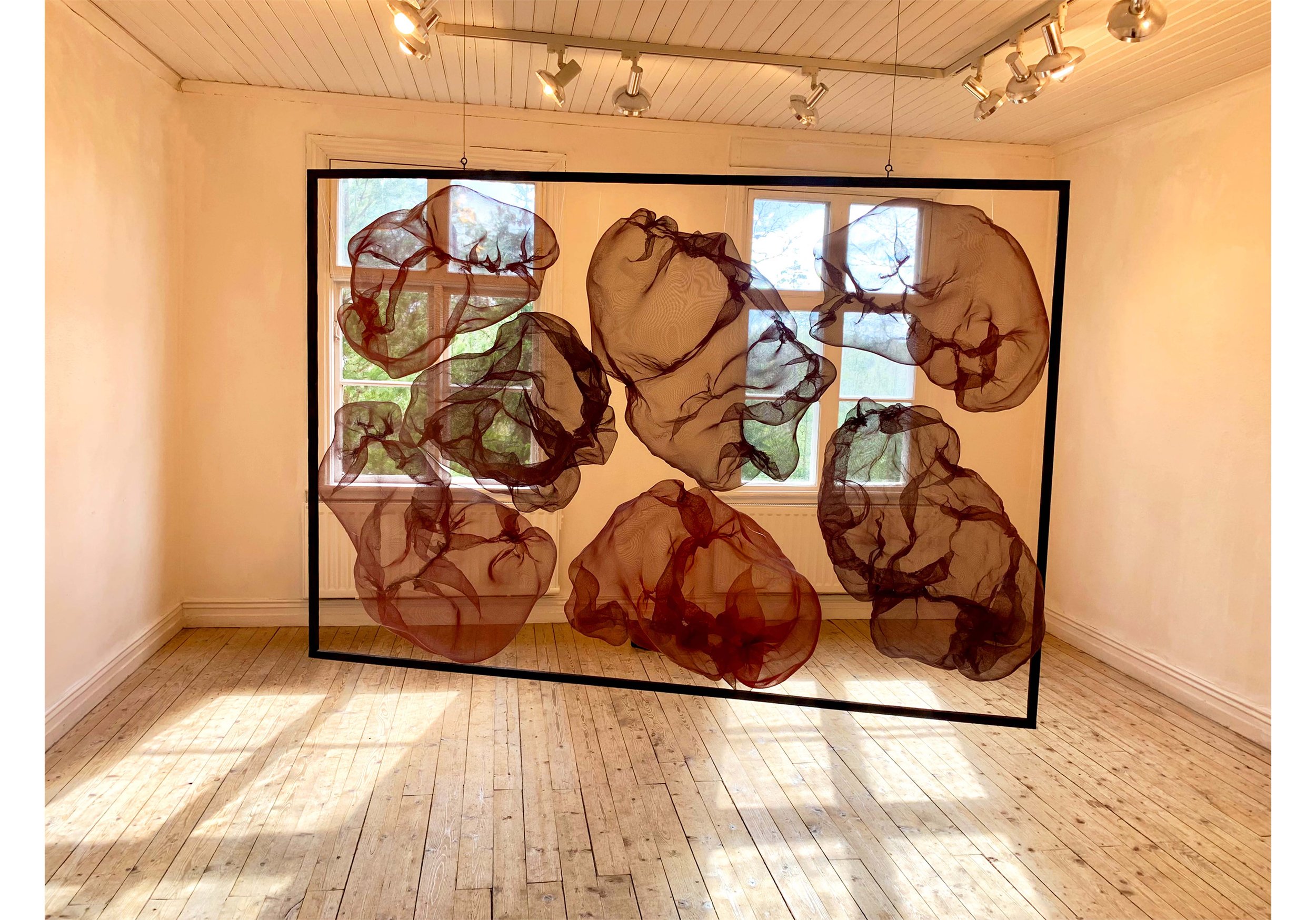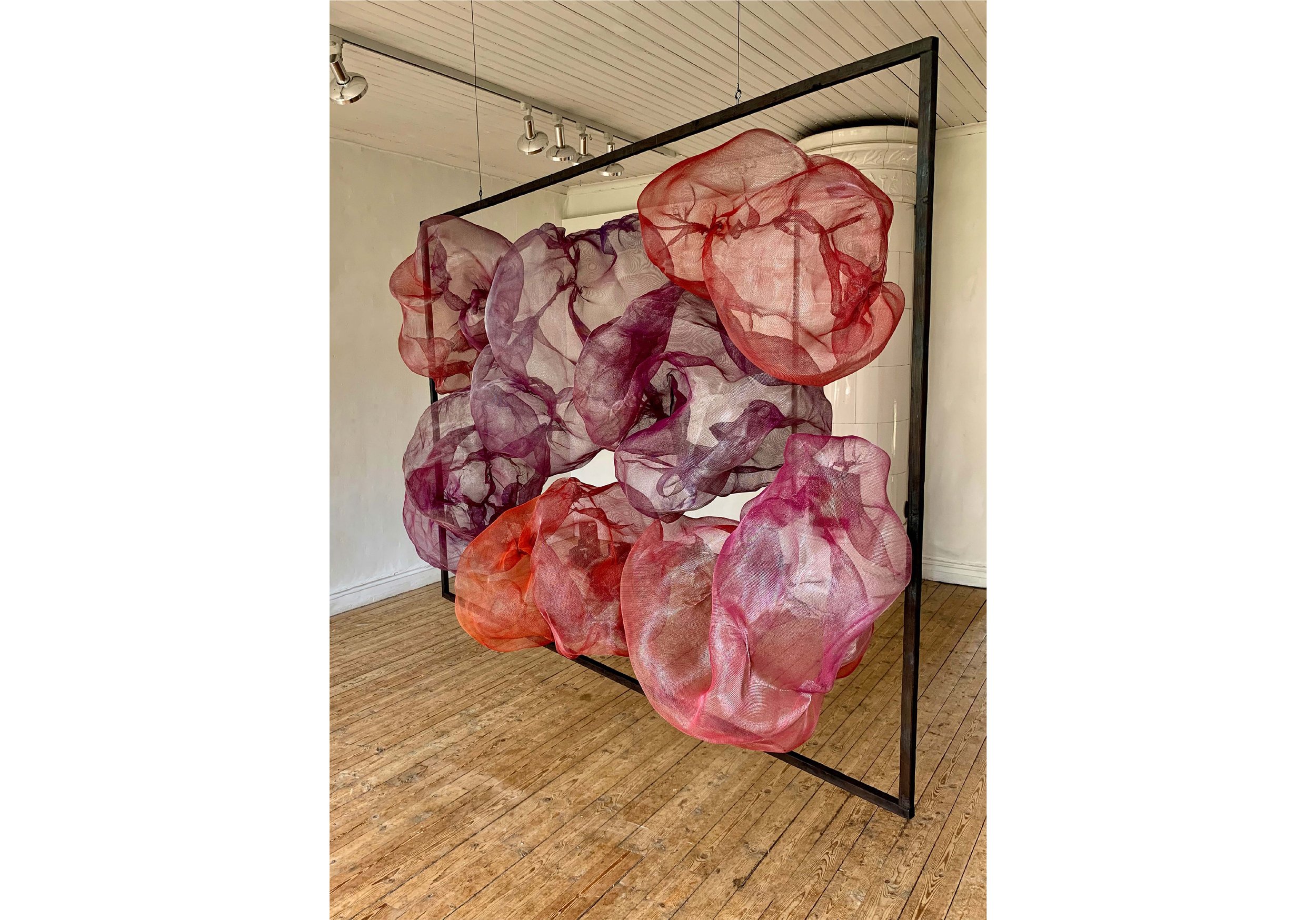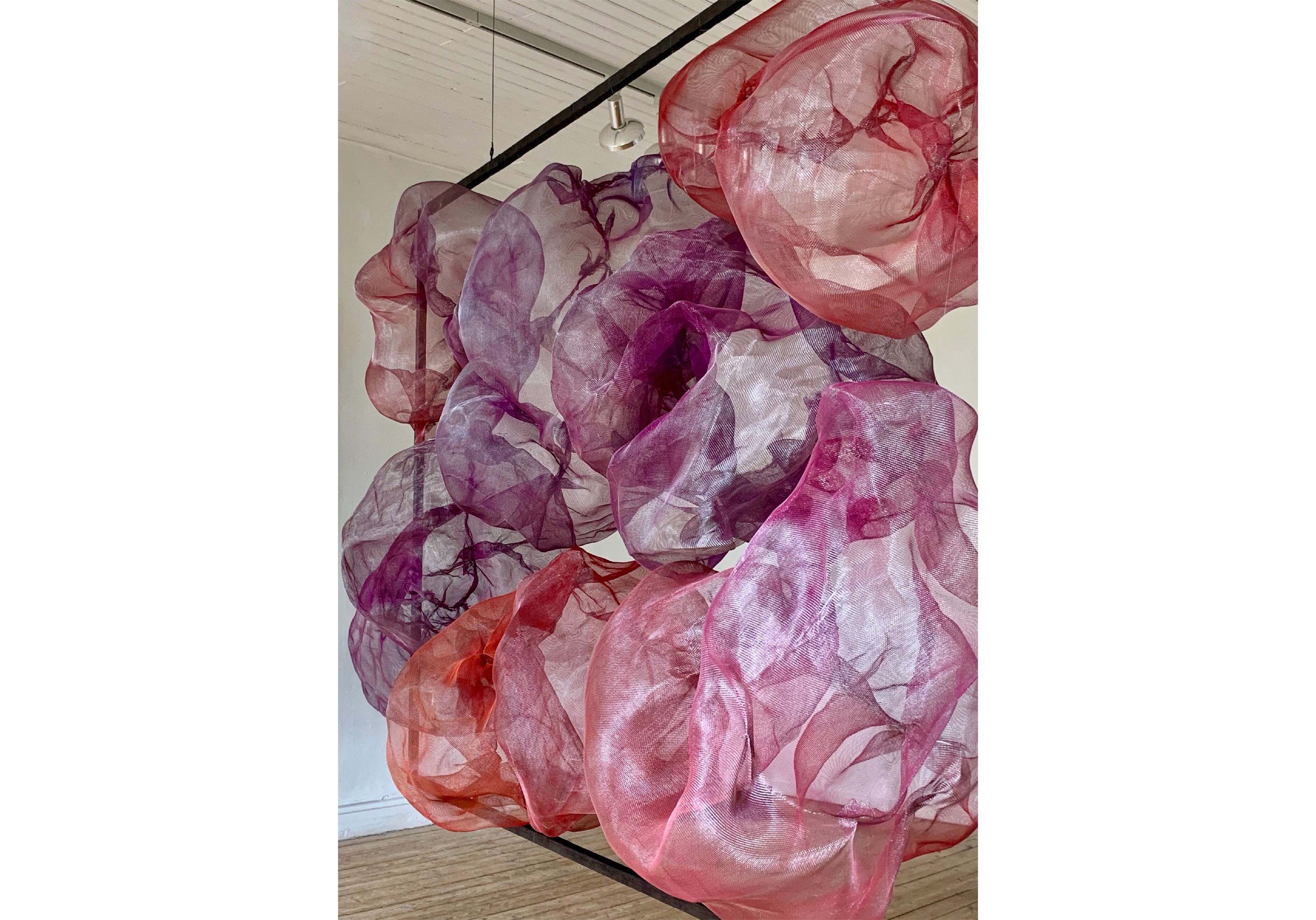SONNENUNTERGANG
April 2023, Bergdala Konstgalleri
The exhibition title “Sonnenuntergang” refers to the German word for sunset. The word “Untergang” can be perceived as ambiguous as it also translated to and used to describe downfall. It is as if the language harbors an inherent doubt about whether the sun will return the next day or not. Historically, in many cultures, there has also been a belief that the sun dies at sunset only to be reborn at dawn.
The exhibition focuses on sunsets, particularly the highly spectacular red and purple ones commonly observed in urban and densely populated areas. These incredibly beautiful reddish-purple sunsets become even more breathtaking in the presence of significant air pollution and particles. This occurs because these particles intensify, reflect, and disperse the red light, which has a longer wavelength compared to, for instance, blue light.
When observed in densely populated areas, they are often associated with high levels of pollution and harmful particles in the air. A very clear manifestation of the harmful emissions primarily resulting from human activity. A darker, more destructive perspective on this beautiful celestial phenomenon. This ties back to the exhibition’s title, “Sonnenuntergang,” and the possibility that these sunsets can be seen as a direct indication of how humanity, if nothing is done to reduce our environmental impact, is heading towards its downfall.
A part of the exhibition consists of a suspended sculptural installation that serves as a visualization and abstraction of this phenomenon. The installation comprises a frame of burnt wood and a cluster of sculptural elements made of metal mesh and spray paint. In the exhibition, the hanging installation is allowed to dominate the space in a similar manner to how the celestial phenomenon overshadows its surroundings.
The second part consists of a series of small sculptures made of burnt wood and tin, depicting lichens. Most lichens are dual organisms, consisting of a symbiosis between a fungus and an alga or cyanobacterium. This symbiosis is highly sensitive to disturbances in the living environment, and the fact that lichens lack roots makes them particularly vulnerable to air pollution. Therefore, the presence of lichens can be used to assess the air quality in an area.
In the exhibition, the aim was to visualize these two indicators of air pollution: one large and spectacular, the other small and hard to detect.
I often work with organic structures and artificial materials, and in the exhibition Sonnenuntergang, I have also chosen to work with various contrasting relationships such as: fragile - resilient, light - dark, visible - hidden. The lichen sculptures are small and difficult to detect in relation to the vast sunset installation. This mirrors nature, where one often needs to get close or lift objects to discover what is small and growing. I have placed them on burnt wood to symbolize our destruction of nature. They are crafted in metal to create a contrast against their inherent fragility. This is to preserve, enhance, and highlight them, driven by a desire for increased resilience.



